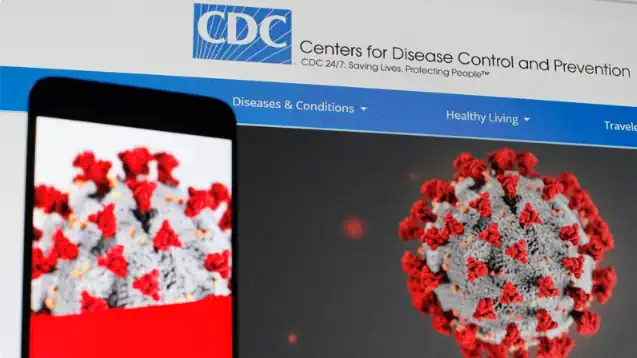
Image Credit:
On the last day of the Obama administration, the CDC quietly published a new set of rules that can force travelers into quarantine or isolation if they are suspected of contracting a contagious disease.
The rules were released under the Federal Registrar on the last day of the Obama Administration, 1/19/2017, and took effect on February 21, 2017.
Despite public concern that the new rules would introduce forced vaccination practices, the CDC insisted it would not “compel vaccination or medical treatment.”
Many public comments expressed concern that these updated regulations sought to compel medical treatment or vaccination without patient consent…HHS/CDC does not seek to compel vaccination or medical treatment. In keeping with current practice, HHS/CDC recommends certain vaccines for post-exposure prophylaxis and individuals may choose to follow these recommendations as they deem appropriate.
As we’ve seen, the CDC left that part up to businesses, Democrat politicians, and the military.
Under these new rules, the CDC warrants quarantine and isolation for diseases like SARS, influenza viruses, viral hemorrhagic fever viruses, but again emphasizes that forced vaccination won’t be implemented:
These quarantinable communicable diseases are currently limited to cholera, diphtheria, infectious tuberculosis (TB), plague, smallpox, yellow fever, and viral hemorrhagic fevers (such as Marburg, Ebola, Lassa fever, and Crimean-Congo), severe acute respiratory syndromes, and influenza caused by novel or re-emergent influenza viruses that are causing or have the potential to cause a pandemic. See Executive Order 13295 (April 4, 2003), as amended by Executive Order 13375 (April 1, 2005) and Executive Order 13674 (July 31, 2014). Changes to the list of quarantinable communicable diseases are beyond the scope of this regulation. And again, we reemphasize that HHS/CDC does not intend, through these regulations, to mandate vaccination or compulsory medical treatment of individuals.
Though the CDC admits it has no authority to “arrest” or forcibly detain individuals, the new rules state that travelers who exhibit symptoms of illness can be quarantined or “detained” if infected by diseases specified by the President.
To be clear, HHS/CDC is not a law enforcement agency, it has no legal authority to “arrest” individuals, but rather has been granted the authority by Congress to “apprehend and detain” individuals for the purposes of preventing the introduction, transmission and spread of quarantinable communicable disease as specified in an Executive Order of the President. 42 U.S.C. 264(b). This provision further provides that “regulations may provide that if upon examination any such individual is found to be infected, he may be detained for such time and in such manner as may be reasonably necessary.” 42 U.S.C. 264(d)(1). HHS/CDC strongly believes that these authorities may be implemented in a manner consistent with the U.S. Constitution. Furthermore, during the period of apprehension, HHS/CDC will arrange for adequate food and water, appropriate accommodation, appropriate medical treatment, and means of necessary communication.
Additionally, such powers to detain travelers will be deferred to the US Customs and Border Protection agency or the U.S. Coast Guard.
… In keeping with current practice and existing law, law enforcement support for quarantine or isolation orders will generally be provided by U.S. Customs and Border Protection, U.S. Coast Guard, or other Federal law enforcement programs, but HHS/CDC may also accept voluntary State and local assistance in enforcing its Federal orders.
And alarmingly, the rules claim that vaccination may be a “conditional” prerequisite for release from quarantine:
HHS/CDC clarifies that when medically appropriate, vaccination or treatment, may be “conditions” of an individual’s release from quarantine or isolation. Individuals consent to these conditions.
Notably, CDC dismissed public concerns that deferring to the World Health Organization’s “Public Health Emergency of International Concern (PHEIC) would surrender US sovereignty to the global body.
HHS/CDC also received a comment objecting to referencing the WHO’s declaration of a Public Health Emergency of International Concern (PHEIC) in the definition of ‘‘public health emergency’’ because this ostensibly relinquishes U.S. sovereignty. HHS/CDC disagrees.
By including references to a PHEIC, HHS/CDC is not constraining its actions or makings its actions subject to the dictates of the WHO. Rather, the declaration or notification of a PHEIC is only one way for HHS/CDC to define when the precommunicable stage of a quarantinable communicable disease may be likely to cause a public health emergency if transmitted to other individuals.
How reassuring.
Creating new quarantine and isolation powers to the CDC – citing the WHO as an authoritative reference – was just the first phase of the world government takeover under the auspices of a public health emergency.
The second phase is being implemented right now by the Biden administration, whose COVID czar Dr. Ashish Jha suggested this week that America’s pandemic response should be led by the United Nations.
Read the document:
572315527-2017-00615